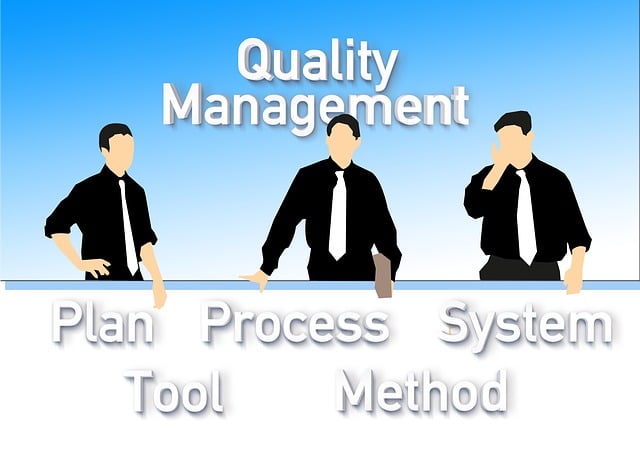Purchase order (PO) financing offers businesses a solution for cash flow gaps, but it comes with potential risks. To navigate these, companies must assess supplier and customer creditworthiness, understand market volatility, and ensure clear terms. A thorough risk assessment, including financial stability checks and industry trend analysis, is vital. Best practices involve rigorous due diligence, clear communication, and informed decision-making. By learning from case studies and staying informed about industry trends, businesses can avoid common PO financing pitfalls and harness its advantages for substantial gains.
“Unleashing the power of purchase order (PO) financing can streamline businesses’ cash flow, but understanding its nuances is essential to avoid potential pitfalls. This comprehensive guide explores the ins and outs of PO financing, from basic concepts to real-world case studies. We delve into common traps, offering risk assessment strategies for buyers and sellers alike. By mastering these practices, businesses can navigate the complexities with confidence, ensuring successful transactions and fostering robust supply chain relationships.”
- Understanding Purchase Order Financing: The Basics
- Common Pitfalls in PO Financing: A Comprehensive Look
- Identifying Red Flags: Risk Assessment Strategies
- Mitigating Risks: Best Practices for Buyers and Sellers
- Case Studies: Real-World Examples of Successful PO Financing
- Staying Informed: Industry Trends and Future Considerations
Understanding Purchase Order Financing: The Basics

Purchase order financing is a process where a funder provides working capital to a business by advancing funds against incoming purchase orders. It’s a powerful tool for businesses looking to bridge cash flow gaps, especially when dealing with slow-paying customers or large orders that require upfront investments. However, navigating this financing option isn’t without its pitfalls. Businesses must understand the basic mechanics and risks involved to ensure a smooth process.
One key aspect is to recognize that funding against purchase orders involves a level of uncertainty. The value of the purchase orders—and thus the repayment ability of the business—depends on factors like customer creditworthiness, delivery schedules, and potential changes in market conditions. Businesses should thoroughly vet both their suppliers and customers, ensuring reliable demand for the goods or services being purchased. Additionally, clarity on pricing, delivery terms, and payment terms is essential to mitigate risks associated with purchase order financing pitfalls.
Common Pitfalls in PO Financing: A Comprehensive Look

In the realm of business transactions, Purchase Order (PO) financing is a popular method for companies to manage cash flow and facilitate purchases. However, navigating this process isn’t without its challenges. Several common pitfalls await unsuspecting businesses, potentially leading to financial setbacks or legal complications. Understanding these traps is essential to ensure a smooth PO financing experience.
One major pitfall is the lack of thorough scrutiny when selecting a financier. Businesses should not solely rely on attractive interest rates but instead conduct comprehensive research on the financier’s reputation, terms and conditions, and customer reviews. Another common issue arises from unclear or inadequate contract terms, which can lead to misunderstandings and disputes. Ensuring all PO financing agreements are meticulously reviewed and negotiated by legal experts is crucial to protecting against unexpected costs or constraints.
Identifying Red Flags: Risk Assessment Strategies

When considering purchase order financing, it’s crucial to implement robust risk assessment strategies and identify potential red flags. This process involves carefully scrutinizing the buyer’s financial health, creditworthiness, and repayment history. Key indicators include late payments, poor cash flow management, or a history of legal disputes—all of which suggest heightened risk.
Effective screening methods can help avoid these purchase order financing pitfalls. Financial statements analysis, credit reports, and industry-specific benchmarks offer valuable insights. Additionally, staying informed about market trends and changes in the buyer’s business environment is essential to make informed decisions and mitigate risks associated with financing purchases.
Mitigating Risks: Best Practices for Buyers and Sellers

To mitigate risks associated with purchase order (PO) financing, both buyers and sellers must adopt best practices that navigate potential pitfalls. For buyers, a thorough review of the supplier’s financial health and credibility is essential. This includes verifying their creditworthiness and assessing their ability to fulfill orders consistently. Additionally, establishing clear payment terms and conditions in the PO contract can protect against unexpected delays or defaults. Regular communication with suppliers about their financial status and any changes in their business operations also helps maintain transparency.
Sellers should implement rigorous due diligence when extending PO financing. This involves setting up robust internal controls to monitor inventory levels, track orders, and ensure proper documentation. Sellers should also consider implementing credit insurance to safeguard against non-payment risks. Clear and consistent communication with buyers regarding financing terms and expectations fosters trust and reduces the chances of disputes or misunderstandings, further minimizing potential losses.
Case Studies: Real-World Examples of Successful PO Financing

In the realm of business, where time and cash flow are critical, understanding successful case studies of purchase order (PO) financing can be a game-changer. Many companies have navigated the intricate landscape of PO financing, avoiding common pitfalls to achieve significant growth. For instance, consider a manufacturing firm that faced delays in receiving goods from overseas suppliers due to traditional banking limitations. By utilizing innovative PO financing techniques, they secured immediate funding against their upcoming orders, ensuring uninterrupted production and timely delivery. This strategic move not only met their operational needs but also opened doors to expand their market reach.
Another compelling example involves a retail startup that needed to stock its shelves with the latest fashion trends before the busy season. Through PO financing, they were able to fund these purchases without incurring immediate debt, allowing them to manage cash flow effectively. This approach enabled the company to offer competitive prices, attract more customers, and ultimately achieve remarkable sales figures. These real-world scenarios demonstrate that by learning from successful PO financing strategies, businesses can steer clear of potential hazards and harness this powerful financial tool for substantial gains.
Staying Informed: Industry Trends and Future Considerations

In the dynamic landscape of purchasing and supply chain management, staying informed about industry trends is as vital as ever. As businesses navigate the complex world of purchase order financing, understanding emerging patterns and future considerations can be a significant edge in avoiding pitfalls. By keeping abreast of market shifts, financial innovations, and regulatory changes, companies can make more informed decisions regarding their financing strategies. For instance, advancements in technology like blockchain are transforming supply chain finance, offering greater transparency, speed, and security for purchase orders.
Moreover, staying current on industry best practices enables businesses to anticipate potential challenges. This includes understanding evolving customer expectations, such as faster delivery times and more flexible payment terms, which can place new demands on financing mechanisms. By proactively integrating these trends into their financial planning, companies can avoid costly mistakes and ensure their purchase order financing remains effective and efficient in a rapidly changing business environment.






